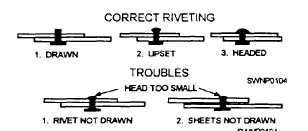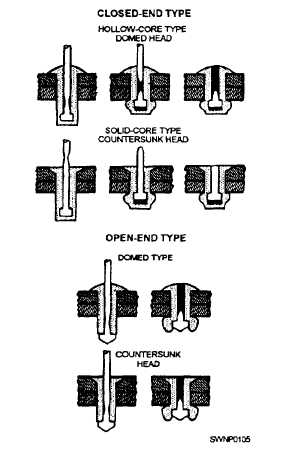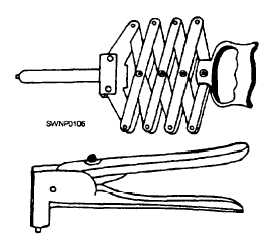
Figure 2-87. - Correct and incorrect riveting.
A correctly drawn, upset, and headed rivet is shown in the top part of figure 2-87. The lower part of this figure shows the results of incorrect riveting.
An addition to sheet-metal rivets are the pop rivets shown in figure 2-88. These pop rivets are high-strength, precision-made, hollow rivets assembled on a solid mandrel that forms an integral part of the rivet. They are especially useful for blind fastening-where there is limited or no access to the reverse side of the work.
Pop rivets provide simplicity and versatility. 'hey are simple and easy to use in complicated installations. Expensive equipment or skilled operators are not required. Just drill a hole, insert, and set the pop rivet from the same side, and high riveting quality and strength are easily and quickly accomplished.
Two basic designs of pop rivets are used: closed end and open end. The closed-end type fills the need for blind rivets that seal as they are set. They are gastight and liquidtight, and like the open-end type, they are installed and set from the same side. As the rivet sets, a high degree of radial expansion is generated in the rivet body, providing effective hole-filing qualities.
The open-end type of pop rivet resembles a hollow rivet from the outside. Because the mandrel head stays in the rivet body, the mandrel stem seals to a certain degree, but it is not liquidtight.
Figure 2-89 shows two of the tools used for setting the pop rivets. These tools are lightweight and very easily used. For example, when using the small hand tool, you need only to insert the mandrel of the rivet in the nosepiece, squeeze the handle (usually three times), and the rivet is set. To operate the scissors-type tool, fully extend the lever linkage or gatelike mechanism and insert the rivet mandrel into the nosepiece of the tool. Insert the rivet into the piece being riveted. Apply firm pressure to the tool, ensuring that the nosepiece remains in close contact with the rivet head. Closing the lever linkage retracts the gripping mechanism, which withdraws the mandrel. The rivet is set when the mandrel head breaks.

Figure 2-88. - Pop rivets.

Figure 2-89. - Pop rivet toots.
Continue Reading